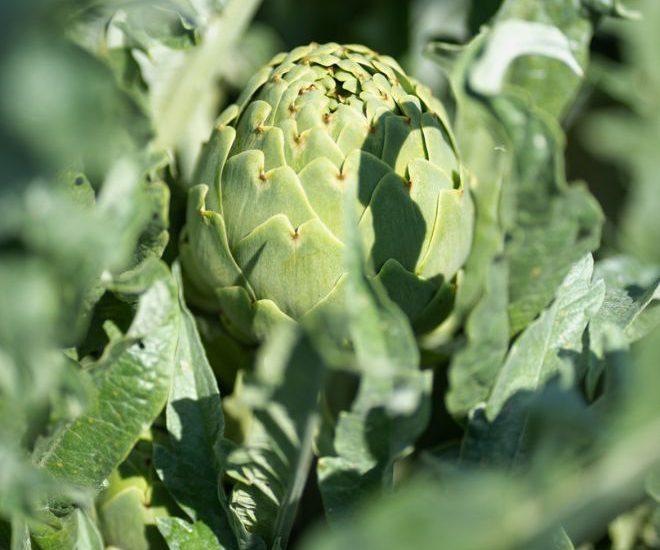A sea of green, fragrant and bountiful: it is time to harvest our artichokes, starting with the large spring “mother” artichokes that we use for our artichoke paté.

Between the end of April and throughout the month of May, the artichoke fields in the area, along the edges of gravel roads or leaning against dry stone walls turn green: the large silvery leaves cover the ground, and at the centre of each plant, one can glimpse this large Mediterranean vegetable peeping through the foliage.

Each plant produces different qualities of artichokes: the first-choice ones are those that emerge from the tip of the plant, with a bud at the top. The smaller artichokes that grow from the secondary branches are the ones we use for our artichokes in oil: small delicacies infused in our freshest extra virgin olive oil.

5 USEFUL FACTS ABOUT ARTICHOKES
- They are Mediterranean herbaceous plants that tolerate the heat and drought well, but do not like frost and sudden temperature changes.
- In winter it is wise to use mulch to protect the roots from frost.
- The part of the artichoke plant we eat is often mistakenly called a fruit when it is actually the plant’s flower.
- Artichokes are harvested when the bud reaches the right size and the tips are still tightly closed.
- If left too long on the plant, the artichoke becomes tough: the older it gets, the harder it becomes. If stored for a long time, it eventually withers.


